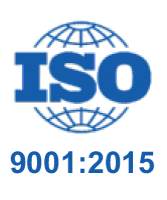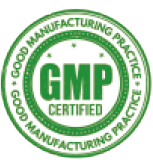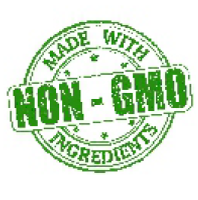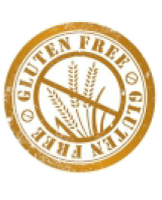Nicotinamide adenine dinucleotide hydrogen
Nicotinamide adenine dinucleotide (NAD) is a cofactor central to metabolism. Found in all living cells, NAD is called a dinucleotide because it consists of two nucleotides joined through their phosphate groups. One nucleotide contains an adenine nucleobase and the other nicotinamide. NAD exists in two forms: an oxidized and reduced form, abbreviated as NAD+ and NADH (H for hydrogen) respectively.
Physical and chemical properties
Nicotinamide adenine dinucleotide consists of two nucleosides joined by a pair of bridging phosphate groups. The nucleosides each contain a ribose ring, one with adenine attached to the first carbon atom (the 1' position) (adenosine diphosphate ribose) and the other with nicotinamide at this position. The nicotinamide moiety can be attached in two orientations to this anomeric carbon atom. Because of these two possible structures, the compound exists as two diastereomers. It is the β-nicotinamide diastereomer of NAD+ that is found in organisms. These nucleotides are joined together by a bridge of two phosphate groups through the 5' carbons.[1]
In metabolism, the compound accepts or donates electrons in redox reactions.[2] Such reactions (summarized in formula below) involve the removal of two hydrogen atoms from the reactant (R), in the form of a hydride ion (H−), and a proton (H+). The proton is released into solution, while the reductant RH2 is oxidized and NAD+ reduced to NADH by transfer of the hydride to the nicotinamide ring.
Extracellular actions of NAD
In recent years, NAD+ has also been recognized as an extracellular signaling molecule involved in cell-to-cell communication.[41][75][76] NAD+ is released from neurons in blood vessels,[40] urinary bladder,[40][77] large intestine,[78][79] from neurosecretory cells,[80] and from brain synaptosomes,[81] and is proposed to be a novel neurotransmitter that transmits information from nerves to effector cells in smooth muscle organs.[78][79] In plants, the extracellular nicotinamide adenine dinucleotide induces resistance to pathogen infection and the first extracellular NAD receptor has been identified.[82] Further studies are needed to determine the underlying mechanisms of its extracellular actions and their importance for human health and life processes in other organisms.
Clinical significance
The enzymes that make and use NAD+ and NADH are important in both pharmacology and the research into future treatments for disease.[83] Drug design and drug development exploits NAD+ in three ways: as a direct target of drugs, by designing enzyme inhibitors or activators based on its structure that change the activity of NAD-dependent enzymes, and by trying to inhibit NAD+ biosynthesis.[84]
Because cancer cells utilize increased glycolysis, and because NAD enhances glycolysis, nicotinamide phosphoribosyltransferase (NAD salvage pathway) is often amplified in cancer cells.[85][86]
Since a large number of oxidoreductases use NAD+ and NADH as substrates, and bind them using a highly conserved structural motif, the idea that inhibitors based on NAD+ could be specific to one enzyme is surprising.[91] However, this can be possible: for example, inhibitors based on the compounds mycophenolic acid and tiazofurin inhibit IMP dehydrogenase at the NAD+ binding site. Because of the importance of this enzyme in purine metabolism, these compounds may be useful as anti-cancer, anti-viral, or immunosuppressive drugs.[91][92] Other drugs are not enzyme inhibitors, but instead activate enzymes involved in NAD+ metabolism. Sirtuins are a particularly interesting target for such drugs, since activation of these NAD-dependent deacetylases extends lifespan in some animal models.[93] Compounds such as resveratrol increase the activity of these enzymes, which may be important in their ability to delay aging in both vertebrate,[94] and invertebrate model organisms.[95][96] In one experiment, mice given NAD for one week had improved nuclear-mitochrondrial communication.[97]
Because of the differences in the metabolic pathways of NAD+ biosynthesis between organisms, such as between bacteria and humans, this area of metabolism is a promising area for the development of new antibiotics.[98][99] For example, the enzyme nicotinamidase, which converts nicotinamide to nicotinic acid, is a target for drug design, as this enzyme is absent in humans but present in yeast and bacteria.[35] In bacteriology, NAD, sometimes referred to factor V, is used a supplement to culture media for some fastidious bacteria.[100]
History
The coenzyme NAD+ was first discovered by the British biochemists Arthur Harden and William John Young in 1906.[101] They noticed that adding boiled and filtered yeast extract greatly accelerated alcoholic fermentation in unboiled yeast extracts. They called the unidentified factor responsible for this effect a coferment. Through a long and difficult purification from yeast extracts, this heat-stable factor was identified as a nucleotide sugar phosphate by Hans von Euler-Chelpin.[102] In 1936, the German scientist Otto Heinrich Warburg showed the function of the nucleotide coenzyme in hydride transfer and identified the nicotinamide portion as the site of redox reactions.[103]
Vitamin precursors of NAD+ were first identified in 1938, when Conrad Elvehjem showed that liver has an "anti-black tongue" activity in the form of nicotinamide.[104] Then, in 1939, he provided the first strong evidence that niacin is used to synthesize NAD+.[105] In the early 1940s, Arthur Kornberg was the first to detect an enzyme in the biosynthetic pathway.[106] In 1949, the American biochemists Morris Friedkin and Albert L. Lehninger proved that NADH linked metabolic pathways such as the citric acid cycle with the synthesis of ATP in oxidative phosphorylation.[107] In 1958, Jack Preiss and Philip Handler discovered the intermediates and enzymes involved in the biosynthesis of NAD+;[108][109] salvage synthesis from nicotinic acid is termed the Preiss-Handler pathway. In 2004, Charles Brenner and co-workers uncovered the nicotinamide riboside kinase pathway to NAD+.[110]
The non-redox roles of NAD(P) were discovered later.[1] The first to be identified was the use of NAD+ as the ADP-ribose donor in ADP-ribosylation reactions, observed in the early 1960s.[111] Studies in the 1980s and 1990s revealed the activities of NAD+ and NADP+ metabolites in cell signaling – such as the action of cyclic ADP-ribose, which was discovered in 1987.[112]
The metabolism of remained an area of intense research into the 21st century, with interest heightened after the discovery of the NAD+-dependent protein deacetylases called sirtuins in 2000, by Shin-ichiro Imai and coworkers in the laboratory of Leonard P. Guarente.[113] In 2009 Imai proposed the "NAD World" hypothesis that key regulators of aging and longevity in mammals are sirtuin 1 and the primary NAD+ synthesizing enzyme nicotinamide phosphoribosyltransferase (NAMPT).[114] In 2016 Imai expanded his hypothesis to "NAD World 2.0" which postulates that extracellular NAMPT from adipose tissue maintains NAD+ in the hypothalamus (the control center) in conjunction with myokines from skeletal muscle cells.[115]
References
- ^ Jump up to:a b c Pollak N, Dölle C, Ziegler M (2007). "The power to reduce: pyridine nucleotides – small molecules with a multitude of functions". Biochem. J. 402 (2): 205–18. doi:10.1042/BJ20061638. PMC 1798440. PMID 17295611.
- ^ Jump up to:a b c d e f Belenky P, Bogan KL, Brenner C (2007). "NAD+ metabolism in health and disease" (PDF). Trends Biochem. Sci. 32 (1): 12–9. doi:10.1016/j.tibs.2006.11.006. PMID 17161604. Archived from the original (PDF) on 4 July 2009. Retrieved 23 December 2007.
- ^ Unden G, Bongaerts J (1997). "Alternative respiratory pathways of Escherichia coli: energetics and transcriptional regulation in response to electron acceptors". Biochim. Biophys. Acta. 1320 (3): 217–34. doi:10.1016/S0005-2728(97)00034-0. PMID 9230919.
- ^ Windholz, Martha (1983). The Merck Index: an encyclopedia of chemicals, drugs, and biologicals (10th ed.). Rahway NJ, US: Merck. p. 909. ISBN 978-0-911910-27-8.
- ^ Biellmann JF, Lapinte C, Haid E, Weimann G (1979). "Structure of lactate dehydrogenase inhibitor generated from coenzyme". Biochemistry. 18 (7): 1212–7. doi:10.1021/bi00574a015. PMID 218616.
- ^ Jump up to:a b Dawson, R. Ben (1985). Data for biochemical research (3rd ed.). Oxford: Clarendon Press. p. 122. ISBN 978-0-19-855358-8.
- ^ Jump up to:a b Lakowicz JR, Szmacinski H, Nowaczyk K, Johnson ML (1992). "Fluorescence lifetime imaging of free and protein-bound NADH". Proc. Natl. Acad. Sci. U.S.A. 89 (4): 1271–5. Bibcode:1992PNAS...89.1271L. doi:10.1073/pnas.89.4.1271. PMC 48431. PMID 1741380.
- ^ Jameson DM, Thomas V, Zhou DM (1989). "Time-resolved fluorescence studies on NADH bound to mitochondrial malate dehydrogenase". Biochim. Biophys. Acta. 994 (2): 187–90. doi:10.1016/0167-4838(89)90159-3. PMID 2910350.
- ^ Kasimova MR, Grigiene J, Krab K, Hagedorn PH, Flyvbjerg H, Andersen PE, Møller IM (2006). "The Free NADH Concentration Is Kept Constant in Plant Mitochondria under Different Metabolic Conditions". Plant Cell. 18 (3): 688–98. doi:10.1105/tpc.105.039354. PMC 1383643. PMID 16461578.
- ^ Reiss PD, Zuurendonk PF, Veech RL (1984). "Measurement of tissue purine, pyrimidine, and other nucleotides by radial compression high-performance liquid chromatography". Anal. Biochem. 140 (1): 162–71. doi:10.1016/0003-2697(84)90148-9. PMID 6486402.
- ^ Yamada K, Hara N, Shibata T, Osago H, Tsuchiya M (2006). "The simultaneous measurement of nicotinamide adenine dinucleotide and related compounds by liquid chromatography/electrospray ionization tandem mass spectrometry". Anal. Biochem. 352 (2): 282–5. doi:10.1016/j.ab.2006.02.017. PMID 16574057.
- ^ Yang H, Yang T, Baur JA, Perez E, Matsui T, Carmona JJ, Lamming DW, Souza-Pinto NC, Bohr VA, Rosenzweig A, de Cabo R, Sauve AA, Sinclair DA (2007). "Nutrient-Sensitive Mitochondrial NAD+ Levels Dictate Cell Survival". Cell. 130 (6): 1095–107. doi:10.1016/j.cell.2007.07.035. PMC 3366687. PMID 17889652.
- ^ Belenky P, Racette FG, Bogan KL, McClure JM, Smith JS, Brenner C (2007). "Nicotinamide riboside promotes Sir2 silencing and extends lifespan via Nrk and Urh1/Pnp1/Meu1 pathways to NAD+". Cell. 129 (3): 473–84. doi:10.1016/j.cell.2007.03.024. PMID 17482543. S2CID 4661723.
- ^ Blinova K, Carroll S, Bose S, Smirnov AV, Harvey JJ, Knutson JR, Balaban RS (2005). "Distribution of mitochondrial NADH fluorescence lifetimes: steady-state kinetics of matrix NADH interactions". Biochemistry. 44 (7): 2585–94. doi:10.1021/bi0485124. PMID 15709771.
- ^ Hopp A, Grüter P, Hottiger MO (2019). "Regulation of Glucose Metabolism by NAD + and ADP-Ribosylation". Cells. 8 (8): 890. doi:10.3390/cells8080890. PMC 6721828. PMID 31412683.
- ^ Todisco S, Agrimi G, Castegna A, Palmieri F (2006). "Identification of the mitochondrial NAD+ transporter in Saccharomyces cerevisiae". J. Biol. Chem. 281 (3): 1524–31. doi:10.1074/jbc.M510425200. PMID 16291748.
- ^ Srivastava S (2016). "Emerging therapeutic roles for NAD(+) metabolism in mitochondrial and age-related disorders". Clinical and Translational Medicine. 5 (1): 25. doi:10.1186/s40169-016-0104-7. PMC 4963347. PMID 27465020.
- ^ Zhang N, Sauve AA (2018). "Regulatory Effects of NAD + Metabolic Pathways on Sirtuin Activity". Progress in Molecular Biology and Translational Science. 154: 71–104. doi:10.1016/bs.pmbts.2017.11.012 (inactive 6 November 2020). PMID 29413178.
- ^ Schafer FQ, Buettner GR (2001). "Redox environment of the cell as viewed through the redox state of the glutathione disulfide/glutathione couple". Free Radic Biol Med. 30 (11): 1191–212. doi:10.1016/S0891-5849(01)00480-4. PMID 11368918.
- ^ Williamson DH, Lund P, Krebs HA (1967). "The redox state of free nicotinamide-adenine dinucleotide in the cytoplasm and mitochondria of rat liver". Biochem. J. 103 (2): 514–27. doi:10.1042/bj1030514. PMC 1270436. PMID 4291787.
- ^ Zhang Q, Piston DW, Goodman RH (2002). "Regulation of corepressor function by nuclear NADH". Science. 295 (5561): 1895–7. doi:10.1126/science.1069300. PMID 11847309. S2CID 31268989.
- ^ Lin SJ, Guarente L (April 2003). "Nicotinamide adenine dinucleotide, a metabolic regulator of transcription, longevity and disease". Curr. Opin. Cell Biol. 15 (2): 241–6. doi:10.1016/S0955-0674(03)00006-1. PMID 12648681.
- ^ Veech RL, Eggleston LV, Krebs HA (1969). "The redox state of free nicotinamide–adenine dinucleotide phosphate in the cytoplasm of rat liver". Biochem. J. 115 (4): 609–19. doi:10.1042/bj1150609a. PMC 1185185. PMID 4391039.
- ^ McReynolds MR, Chellappa K, Baur JA (2020). "Age-related NAD + decline". Experimental Gerontology. 134: 110888. doi:10.1016/j.exger.2020.110888. PMC 7442590. PMID 32097708.
- ^ Katoh A, Uenohara K, Akita M, Hashimoto T (2006). "Early Steps in the Biosynthesis of NAD in Arabidopsis Start with Aspartate and Occur in the Plastid". Plant Physiol. 141 (3): 851–7. doi:10.1104/pp.106.081091. PMC 1489895. PMID 16698895.
- ^ Foster JW, Moat AG (1 March 1980). "Nicotinamide adenine dinucleotide biosynthesis and pyridine nucleotide cycle metabolism in microbial systems". Microbiol. Rev. 44 (1): 83–105. doi:10.1128/MMBR.44.1.83-105.1980. PMC 373235. PMID 6997723.
- ^ Magni G, Orsomando G, Raffaelli N (2006). "Structural and functional properties of NAD kinase, a key enzyme in NADP biosynthesis". Mini Reviews in Medicinal Chemistry. 6 (7): 739–46. doi:10.2174/138955706777698688. PMID 16842123.
- ^ Sakuraba H, Kawakami R, Ohshima T (2005). "First Archaeal Inorganic Polyphosphate/ATP-Dependent NAD Kinase, from Hyperthermophilic Archaeon Pyrococcus horikoshii: Cloning, Expression, and Characterization". Appl. Environ. Microbiol. 71 (8): 4352–8. doi:10.1128/AEM.71.8.4352-4358.2005. PMC 1183369. PMID 16085824.
- ^ Raffaelli N, Finaurini L, Mazzola F, Pucci L, Sorci L, Amici A, Magni G (2004). "Characterization of Mycobacterium tuberculosis NAD kinase: functional analysis of the full-length enzyme by site-directed mutagenesis". Biochemistry. 43 (23): 7610–7. doi:10.1021/bi049650w. PMID 15182203.
- ^ Henderson LM (1983). "Niacin". Annu. Rev. Nutr. 3: 289–307. doi:10.1146/annurev.nu.03.070183.001445. PMID 6357238.
- ^ Jump up to:a b Rajman L, Chwalek K, Sinclair DA (2018). "Therapeutic Potential of NAD-Boosting Molecules: The In Vivo Evidence". Cell Metabolism. 27 (3): 529–547. doi:10.1016/j.cmet.2018.02.011. PMC 6342515. PMID 29514064.
- ^ Anderson RM, Bitterman KJ, Wood JG, Medvedik O, Cohen H, Lin SS, Manchester JK, Gordon JI, Sinclair DA (2002). "Manipulation of a nuclear NAD+ salvage pathway delays aging without altering steady-state NAD+levels". J. Biol. Chem. 277 (21): 18881–90. doi:10.1074/jbc.M111773200. PMID 11884393.
- ^ Billington RA, Travelli C, Ercolano E, Galli U, Roman CB, Grolla AA, Canonico PL, Condorelli F, Genazzani AA (2008). "Characterization of NAD Uptake in Mammalian Cells". J. Biol. Chem. 283 (10): 6367–74. doi:10.1074/jbc.M706204200. PMID 18180302.
- ^ Trammell SA, Schmidt MS, Weidemann BJ, Redpath P, Jaksch F, Dellinger RW, Li Z, Abel ED, Migaud ME, Brenner C (2016). "Nicotinamide riboside is uniquely and orally bioavailable in mice and humans". Nature Communications. 7: 12948. Bibcode:2016NatCo...712948T. doi:10.1038/ncomms12948. PMC 5062546. PMID 27721479.
- ^ Jump up to:a b Rongvaux A, Andris F, Van Gool F, Leo O (2003). "Reconstructing eukaryotic NAD metabolism". BioEssays. 25 (7): 683–90. doi:10.1002/bies.10297. PMID 12815723.
- ^ Ma B, Pan SJ, Zupancic ML, Cormack BP (2007). "Assimilation of NAD+precursors in Candida glabrata". Mol. Microbiol. 66 (1): 14–25. doi:10.1111/j.1365-2958.2007.05886.x. PMID 17725566. S2CID 22282128.
- ^ Reidl J, Schlör S, Kraiss A, Schmidt-Brauns J, Kemmer G, Soleva E (2000). "NADP and NAD utilization in Haemophilus influenzae". Mol. Microbiol. 35 (6): 1573–81. doi:10.1046/j.1365-2958.2000.01829.x. PMID 10760156. S2CID 29776509.
- ^ Gerdes SY, Scholle MD, D'Souza M, Bernal A, Baev MV, Farrell M, Kurnasov OV, Daugherty MD, Mseeh F, Polanuyer BM, Campbell JW, Anantha S, Shatalin KY, Chowdhury SA, Fonstein MY, Osterman AL (2002). "From Genetic Footprinting to Antimicrobial Drug Targets: Examples in Cofactor Biosynthetic Pathways". J. Bacteriol. 184 (16): 4555–72. doi:10.1128/JB.184.16.4555-4572.2002. PMC 135229. PMID 12142426.
- ^ Senkovich O, Speed H, Grigorian A, et al. (2005). "Crystallization of three key glycolytic enzymes of the opportunistic pathogen Cryptosporidium parvum". Biochim. Biophys. Acta. 1750 (2): 166–72. doi:10.1016/j.bbapap.2005.04.009. PMID 15953771.
- ^ Jump up to:a b c Smyth LM, Bobalova J, Mendoza MG, Lew C, Mutafova-Yambolieva VN (2004). "Release of beta-nicotinamide adenine dinucleotide upon stimulation of postganglionic nerve terminals in blood vessels and urinary bladder". J Biol Chem. 279 (47): 48893–903. doi:10.1074/jbc.M407266200. PMID 15364945.
- ^ Jump up to:a b c Billington RA, Bruzzone S, De Flora A, Genazzani AA, Koch-Nolte F, Ziegler M, Zocchi E (2006). "Emerging functions of extracellular pyridine nucleotides". Mol. Med. 12 (11–12): 324–7. doi:10.2119/2006-00075.Billington. PMC 1829198. PMID 17380199.
- ^ "Enzyme Nomenclature, Recommendations for enzyme names from the Nomenclature Committee of the International Union of Biochemistry and Molecular Biology". Archived from the original on 5 December 2007. Retrieved 6 December 2007.
- ^ "NiceZyme View of ENZYME: EC 1.6.5.3". Expasy. Retrieved 16 December 2007.
- ^ Hanukoglu I (2015). "Proteopedia: Rossmann fold: A beta-alpha-beta fold at dinucleotide binding sites". Biochem Mol Biol Educ. 43 (3): 206–209. doi:10.1002/bmb.20849. PMID 25704928. S2CID 11857160.
- ^ Lesk AM (1995). "NAD-binding domains of dehydrogenases". Curr. Opin. Struct. Biol. 5 (6): 775–83. doi:10.1016/0959-440X(95)80010-7. PMID 8749365.
- ^ Rao ST, Rossmann MG (1973). "Comparison of super-secondary structures in proteins". J Mol Biol. 76 (2): 241–56. doi:10.1016/0022-2836(73)90388-4. PMID 4737475.
- ^ Goto M, Muramatsu H, Mihara H, Kurihara T, Esaki N, Omi R, Miyahara I, Hirotsu K (2005). "Crystal structures of Delta1-piperideine-2-carboxylate/Delta1-pyrroline-2-carboxylate reductase belonging to a new family of NAD(P)H-dependent oxidoreductases: conformational change, substrate recognition, and stereochemistry of the reaction". J. Biol. Chem. 280 (49): 40875–84. doi:10.1074/jbc.M507399200. PMID 16192274.
- ^ Jump up to:a b Bellamacina CR (1 September 1996). "The nicotinamide dinucleotide binding motif: a comparison of nucleotide binding proteins". FASEB J. 10 (11): 1257–69. doi:10.1096/fasebj.10.11.8836039. PMID 8836039.
- ^ Carugo O, Argos P (1997). "NADP-dependent enzymes. I: Conserved stereochemistry of cofactor binding". Proteins. 28 (1): 10–28. doi:10.1002/(SICI)1097-0134(199705)28:1<10::AID-PROT2>3.0.CO;2-N. PMID 9144787.
- ^ Vickers TJ, Orsomando G, de la Garza RD, Scott DA, Kang SO, Hanson AD, Beverley SM (2006). "Biochemical and genetic analysis of methylenetetrahydrofolate reductase in Leishmania metabolism and virulence". J. Biol. Chem. 281 (50): 38150–8. doi:10.1074/jbc.M608387200. PMID 17032644.
- ^ Schmidt-Rohr K (2020). "Oxygen Is the High-Energy Molecule Powering Complex Multicellular Life: Fundamental Corrections to Traditional Bioenergetics". ACS Omega. 5 (5): 2221–2233. doi:10.1021/acsomega.9b03352. PMC 7016920. PMID 32064383.
- ^ Bakker BM, Overkamp KM, Kötter P, Luttik MA, Pronk JT (2001). "Stoichiometry and compartmentation of NADH metabolism inSaccharomyces cerevisiae". FEMS Microbiol. Rev. 25 (1): 15–37. doi:10.1111/j.1574-6976.2001.tb00570.x. PMID 11152939.
- ^ Rich PR (2003). "The molecular machinery of Keilin's respiratory chain"(PDF). Biochem. Soc. Trans. 31 (Pt 6): 1095–105. doi:10.1042/BST0311095. PMID 14641005. S2CID 32361233.
- ^ Heineke D, Riens B, Grosse H, Hoferichter P, Peter U, Flügge UI, Heldt HW (1991). "Redox Transfer across the Inner Chloroplast Envelope Membrane". Plant Physiol. 95 (4): 1131–1137. doi:10.1104/pp.95.4.1131. PMC 1077662. PMID 16668101.
- ^ Jump up to:a b Nicholls DG; Ferguson SJ (2002). Bioenergetics 3 (1st ed.). Academic Press. ISBN 978-0-12-518121-1.
- ^ Sistare FD, Haynes RC (15 October 1985). "The interaction between the cytosolic pyridine nucleotide redox potential and gluconeogenesis from lactate/pyruvate in isolated rat hepatocytes. Implications for investigations of hormone action". J. Biol. Chem. 260 (23): 12748–53. PMID 4044607.
- ^ Freitag A, Bock E (1990). "Energy conservation in Nitrobacter". FEMS Microbiology Letters. 66 (1–3): 157–62. doi:10.1111/j.1574-6968.1990.tb03989.x.
- ^ Starkenburg SR, Chain PS, Sayavedra-Soto LA, Hauser L, Land ML, Larimer FW, Malfatti SA, Klotz MG, Bottomley PJ, Arp DJ, Hickey WJ (2006). "Genome Sequence of the Chemolithoautotrophic Nitrite-Oxidizing BacteriumNitrobacter winogradskyi Nb-255". Appl. Environ. Microbiol. 72 (3): 2050–63. doi:10.1128/AEM.72.3.2050-2063.2006. PMC 1393235. PMID 16517654.
- ^ Ziegler M (2000). "New functions of a long-known molecule. Emerging roles of NAD in cellular signaling". Eur. J. Biochem. 267 (6): 1550–64. doi:10.1046/j.1432-1327.2000.01187.x. PMID 10712584.
- ^ Jump up to:a b Diefenbach J, Bürkle A (2005). "Introduction to poly(ADP-ribose) metabolism". Cell. Mol. Life Sci. 62 (7–8): 721–30. doi:10.1007/s00018-004-4503-3. PMID 15868397.
- ^ Berger F, Ramírez-Hernández MH, Ziegler M (2004). "The new life of a centenarian: signaling functions of NAD(P)". Trends Biochem. Sci. 29 (3): 111–8. doi:10.1016/j.tibs.2004.01.007. PMID 15003268.
- ^ Corda D, Di Girolamo M (2003). "New Embo Member's Review: Functional aspects of protein mono-ADP-ribosylation". EMBO J. 22 (9): 1953–8. doi:10.1093/emboj/cdg209. PMC 156081. PMID 12727863.
- ^ Jump up to:a b Bürkle A (2005). "Poly(ADP-ribose). The most elaborate metabolite of NAD+". FEBS J. 272 (18): 4576–89. doi:10.1111/j.1742-4658.2005.04864.x. PMID 16156780. S2CID 22975714.
- ^ Seman M, Adriouch S, Haag F, Koch-Nolte F (2004). "Ecto-ADP-ribosyltransferases (ARTs): emerging actors in cell communication and signaling". Curr. Med. Chem. 11 (7): 857–72. doi:10.2174/0929867043455611. PMID 15078170.
- ^ Chen YG, Kowtoniuk WE, Agarwal I, Shen Y, Liu DR (December 2009). "LC/MS analysis of cellular RNA reveals NAD-linked RNA". Nat Chem Biol. 5 (12): 879–881. doi:10.1038/nchembio.235. PMC 2842606. PMID 19820715.
- ^ Guse AH (2004). "Biochemistry, biology, and pharmacology of cyclic adenosine diphosphoribose (cADPR)". Curr. Med. Chem. 11 (7): 847–55. doi:10.2174/0929867043455602. PMID 15078169.
- ^ Guse AH (2004). "Regulation of calcium signaling by the second messenger cyclic adenosine diphosphoribose (cADPR)". Curr. Mol. Med. 4 (3): 239–48. doi:10.2174/1566524043360771. PMID 15101682.
- ^ Guse AH (2005). "Second messenger function and the structure-activity relationship of cyclic adenosine diphosphoribose (cADPR)". FEBS J. 272 (18): 4590–7. doi:10.1111/j.1742-4658.2005.04863.x. PMID 16156781. S2CID 21509962.
- ^ North BJ, Verdin E (2004). "Sirtuins: Sir2-related NAD-dependent protein deacetylases". Genome Biol. 5 (5): 224. doi:10.1186/gb-2004-5-5-224. PMC 416462. PMID 15128440.
- ^ Blander G, Guarente L (2004). "The Sir2 family of protein deacetylases"(PDF). Annu. Rev. Biochem. 73: 417–35. doi:10.1146/annurev.biochem.73.011303.073651. PMID 15189148. S2CID 27494475.
- ^ Trapp J, Jung M (2006). "The role of NAD+ dependent histone deacetylases (sirtuins) in ageing". Curr Drug Targets. 7 (11): 1553–60. doi:10.2174/1389450110607011553. PMID 17100594.
- ^ Wilkinson A, Day J, Bowater R (2001). "Bacterial DNA ligases". Mol. Microbiol. 40 (6): 1241–8. doi:10.1046/j.1365-2958.2001.02479.x. PMID 11442824. S2CID 19909818.
- ^ Schär P, Herrmann G, Daly G, Lindahl T (1997). "A newly identified DNA ligase of Saccharomyces cerevisiae involved in RAD52-independent repair of DNA double-strand breaks". Genes & Development. 11 (15): 1912–24. doi:10.1101/gad.11.15.1912. PMC 316416. PMID 9271115.
- ^ Jump up to:a b c Li, Jun; Bonkowski, Michael S.; Moniot, Sébastien; Zhang, Dapeng; Hubbard, Basil P.; Ling, Alvin J. Y.; Rajman, Luis A.; Qin, Bo; Lou, Zhenkun; Gorbunova, Vera; Aravind, L.; Steegborn, Clemens; Sinclair, David A. (23 March 2017). "A conserved NAD binding pocket that regulates protein-protein interactions during aging". Science. 355 (6331): 1312–1317. Bibcode:2017Sci...355.1312L. doi:10.1126/science.aad8242. PMC 5456119. PMID 28336669.
- ^ Ziegler M, Niere M (2004). "NAD+ surfaces again". Biochem. J. 382 (Pt 3): e5–6. doi:10.1042/BJ20041217. PMC 1133982. PMID 15352307.
- ^ Koch-Nolte F, Fischer S, Haag F, Ziegler M (2011). "Compartmentation of NAD+-dependent signalling". FEBS Lett. 585 (11): 1651–6. doi:10.1016/j.febslet.2011.03.045. PMID 21443875. S2CID 4333147.
- ^ Breen LT, Smyth LM, Yamboliev IA, Mutafova-Yambolieva VN (2006). "beta-NAD is a novel nucleotide released on stimulation of nerve terminals in human urinary bladder detrusor muscle" (PDF). Am. J. Physiol. Renal Physiol. 290 (2): F486–95. doi:10.1152/ajprenal.00314.2005. PMID 16189287. S2CID 11400206.
- ^ Jump up to:a b Mutafova-Yambolieva VN, Hwang SJ, Hao X, Chen H, Zhu MX, Wood JD, Ward SM, Sanders KM (2007). "Beta-nicotinamide adenine dinucleotide is an inhibitory neurotransmitter in visceral smooth muscle". Proc. Natl. Acad. Sci. U.S.A. 104 (41): 16359–64. Bibcode:2007PNAS..10416359M. doi:10.1073/pnas.0705510104. PMC 2042211. PMID 17913880.
- ^ Jump up to:a b Hwang SJ, Durnin L, Dwyer L, Rhee PL, Ward SM, Koh SD, Sanders KM, Mutafova-Yambolieva VN (2011). "β-nicotinamide adenine dinucleotide is an enteric inhibitory neurotransmitter in human and nonhuman primate colons". Gastroenterology. 140 (2): 608–617.e6. doi:10.1053/j.gastro.2010.09.039. PMC 3031738. PMID 20875415.
- ^ Yamboliev IA, Smyth LM, Durnin L, Dai Y, Mutafova-Yambolieva VN (2009). "Storage and secretion of beta-NAD, ATP and dopamine in NGF-differentiated rat pheochromocytoma PC12 cells". Eur. J. Neurosci. 30 (5): 756–68. doi:10.1111/j.1460-9568.2009.06869.x. PMC 2774892. PMID 19712094.
- ^ Durnin L, Dai Y, Aiba I, Shuttleworth CW, Yamboliev IA, Mutafova-Yambolieva VN (2012). "Release, neuronal effects and removal of extracellular β-nicotinamide adenine dinucleotide (β-NAD+) in the rat brain". Eur. J. Neurosci. 35 (3): 423–35. doi:10.1111/j.1460-9568.2011.07957.x. PMC 3270379. PMID 22276961.
- ^ Wang C, Zhou M, Zhang X, Yao J, Zhang Y, Mou Z (2017). "A lectin receptor kinase as a potential sensor for extracellular nicotinamide adenine dinucleotide in Arabidopsis thaliana". eLife. 6: e25474. doi:10.7554/eLife.25474. PMC 5560858. PMID 28722654.
- ^ Sauve AA (March 2008). "NAD+ and vitamin B3: from metabolism to therapies". The Journal of Pharmacology and Experimental Therapeutics. 324(3): 883–93. doi:10.1124/jpet.107.120758. PMID 18165311. S2CID 875753.
- ^ Khan JA, Forouhar F, Tao X, Tong L (2007). "Nicotinamide adenine dinucleotide metabolism as an attractive target for drug discovery". Expert Opin. Ther. Targets. 11 (5): 695–705. doi:10.1517/14728222.11.5.695. PMID 17465726. S2CID 6490887.
- ^ Yaku K, Okabe K, Hikosaka K, Nakagawa T (2018). "NAD Metabolism in Cancer Therapeutics". Frontiers in Microbiology. 8: 622. doi:10.3389/fonc.2018.00622. PMC 6315198. PMID 30631755.
- ^ Pramono AA, Rather GM, Herman H (2020). "NAD- and NADPH-Contributing Enzymes as Therapeutic Targets in Cancer: An Overview". Biomolecules. 10 (3): 358. doi:10.3390/biom10030358. PMC 7175141. PMID 32111066.
- ^ Swerdlow RH (1998). "Is NADH effective in the treatment of Parkinson's disease?". Drugs Aging. 13 (4): 263–8. doi:10.2165/00002512-199813040-00002. PMID 9805207. S2CID 10683162.
- ^ Timmins GS, Deretic V (2006). "Mechanisms of action of isoniazid". Mol. Microbiol. 62 (5): 1220–7. doi:10.1111/j.1365-2958.2006.05467.x. PMID 17074073. S2CID 43379861.
- ^ Rawat R, Whitty A, Tonge PJ (2003). "The isoniazid-NAD adduct is a slow, tight-binding inhibitor of InhA, the Mycobacterium tuberculosis enoyl reductase: Adduct affinity and drug resistance". Proc. Natl. Acad. Sci. U.S.A. 100 (24): 13881–6. Bibcode:2003PNAS..10013881R. doi:10.1073/pnas.2235848100. PMC 283515. PMID 14623976.
- ^ Argyrou A, Vetting MW, Aladegbami B, Blanchard JS (2006). "Mycobacterium tuberculosis dihydrofolate reductase is a target for isoniazid". Nat. Struct. Mol. Biol. 13 (5): 408–13. doi:10.1038/nsmb1089. PMID 16648861. S2CID 7721666.
- ^ Jump up to:a b Pankiewicz KW, Patterson SE, Black PL, Jayaram HN, Risal D, Goldstein BM, Stuyver LJ, Schinazi RF (2004). "Cofactor mimics as selective inhibitors of NAD-dependent inosine monophosphate dehydrogenase (IMPDH)—the major therapeutic target". Curr. Med. Chem. 11 (7): 887–900. doi:10.2174/0929867043455648. PMID 15083807.
- ^ Franchetti P, Grifantini M (1999). "Nucleoside and non-nucleoside IMP dehydrogenase inhibitors as antitumor and antiviral agents". Curr. Med. Chem. 6 (7): 599–614. PMID 10390603.
- ^ Kim EJ, Um SJ (2008). "SIRT1: roles in aging and cancer". BMB Rep. 41(11): 751–6. doi:10.5483/BMBRep.2008.41.11.751. PMID 19017485.
- ^ Valenzano DR, Terzibasi E, Genade T, Cattaneo A, Domenici L, Cellerino A (2006). "Resveratrol prolongs lifespan and retards the onset of age-related markers in a short-lived vertebrate". Curr. Biol. 16 (3): 296–300. doi:10.1016/j.cub.2005.12.038. PMID 16461283. S2CID 1662390.
- ^ Howitz KT, Bitterman KJ, Cohen HY, Lamming DW, Lavu S, Wood JG, Zipkin RE, Chung P, Kisielewski A, Zhang LL, Scherer B, Sinclair DA (2003). "Small molecule activators of sirtuins extend Saccharomyces cerevisiaelifespan". Nature. 425 (6954): 191–6. Bibcode:2003Natur.425..191H. doi:10.1038/nature01960. PMID 12939617. S2CID 4395572.
- ^ Wood JG, Rogina B, Lavu S, Howitz K, Helfand SL, Tatar M, Sinclair D (2004). "Sirtuin activators mimic caloric restriction and delay ageing in metazoans". Nature. 430 (7000): 686–9. Bibcode:2004Natur.430..686W. doi:10.1038/nature02789. PMID 15254550. S2CID 52851999.
- ^ Gomes AP, Price NL, Ling AJ, Moslehi JJ, Montgomery MK, Rajman L, White JP, Teodoro JS, Wrann CD, Hubbard BP, Mercken EM, Palmeira CM, de Cabo R, Rolo AP, Turner N, Bell EL, Sinclair DA (19 December 2013). "Declining NAD+ Induces a Pseudohypoxic State Disrupting Nuclear-Mitochondrial Communication during Aging". Cell. 155 (7): 1624–1638. doi:10.1016/j.cell.2013.11.037. PMC 4076149. PMID 24360282.
- ^ Rizzi M, Schindelin H (2002). "Structural biology of enzymes involved in NAD and molybdenum cofactor biosynthesis". Curr. Opin. Struct. Biol. 12 (6): 709–20. doi:10.1016/S0959-440X(02)00385-8. PMID 12504674.
- ^ Begley TP, Kinsland C, Mehl RA, Osterman A, Dorrestein P (2001). "The biosynthesis of nicotinamide adenine dinucleotides in bacteria". Cofactor Biosynthesis. Vitam. Horm. Vitamins & Hormones. 61. pp. 103–19. doi:10.1016/S0083-6729(01)61003-3. ISBN 978-0-12-709861-6. PMID 11153263.
- ^ Meningitis |Lab Manual |Id and Characterization of Hib |CDC
- ^ Harden, A; Young, WJ (24 October 1906). "The alcoholic ferment of yeast-juice Part II.--The coferment of yeast-juice". Proceedings of the Royal Society of London. Series B, Containing Papers of a Biological Character. 78(526): 369–375. doi:10.1098/rspb.1906.0070. JSTOR 80144.
- ^ "Fermentation of sugars and fermentative enzymes" (PDF). Nobel Lecture, 23 May 1930. Nobel Foundation. Archived from the original (PDF)on 27 September 2007. Retrieved 30 September 2007.
- ^ Warburg O, Christian W (1936). "Pyridin, der wasserstoffübertragende bestandteil von gärungsfermenten (pyridin-nucleotide)" [Pyridin, the hydrogen-transferring component of the fermentation enzymes (pyridine nucleotide)]. Biochemische Zeitschrift (in German). 287: 291. doi:10.1002/hlca.193601901199.
- ^ Elvehjem CA, Madden RJ, Strong FM, Woolley DW (1938). "The isolation and identification of the anti-black tongue factor" (PDF). J. Biol. Chem. 123(1): 137–49.
- ^ Axelrod AE, Madden RJ, Elvehjem CA (1939). "The effect of a nicotinic acid deficiency upon the coenzyme I content of animal tissues" (PDF). J. Biol. Chem. 131 (1): 85–93.
- ^ Kornberg A (1948). "The participation of inorganic pyrophosphate in the reversible enzymatic synthesis of diphosphopyridine nucleotide" (PDF). J. Biol. Chem. 176 (3): 1475–76. PMID 18098602.
- ^ Friedkin M, Lehninger AL (1 April 1949). "Esterification of inorganic phosphate coupled to electron transport between dihydrodiphosphopyridine nucleotide and oxygen". J. Biol. Chem. 178 (2): 611–23. PMID 18116985.
- ^ Preiss J, Handler P (1958). "Biosynthesis of diphosphopyridine nucleotide. I. Identification of intermediates". J. Biol. Chem. 233 (2): 488–92. PMID 13563526.
- ^ Preiss J, Handler P (1958). "Biosynthesis of diphosphopyridine nucleotide. II. Enzymatic aspects". J. Biol. Chem. 233 (2): 493–500. PMID 13563527.
- ^ Bieganowski, P; Brenner, C (2004). "Discoveries of Nicotinamide Riboside as a Nutrient and Conserved NRK Genes Establish a Preiss-Handler Independent Route to NAD+ in Fungi and Humans". Cell. 117 (4): 495–502. doi:10.1016/S0092-8674(04)00416-7. PMID 15137942. S2CID 4642295.
- ^ Chambon P, Weill JD, Mandel P (1963). "Nicotinamide mononucleotide activation of new DNA-dependent polyadenylic acid synthesizing nuclear enzyme". Biochem. Biophys. Res. Commun. 11: 39–43. doi:10.1016/0006-291X(63)90024-X. PMID 14019961.
- ^ Clapper DL, Walseth TF, Dargie PJ, Lee HC (15 July 1987). "Pyridine nucleotide metabolites stimulate calcium release from sea urchin egg microsomes desensitized to inositol trisphosphate". J. Biol. Chem. 262 (20): 9561–8. PMID 3496336.
- ^ Imai S, Armstrong CM, Kaeberlein M, Guarente L (2000). "Transcriptional silencing and longevity protein Sir2 is an NAD-dependent histone deacetylase". Nature. 403 (6771): 795–800. Bibcode:2000Natur.403..795I. doi:10.1038/35001622. PMID 10693811. S2CID 2967911.
- ^ Imai S (2009). "The NAD World: a new systemic regulatory network for metabolism and aging--Sirt1, systemic NAD biosynthesis, and their importance". Cell Biochemistry and Biophysics. 53 (2): 65–74. doi:10.1007/s12013-008-9041-4. PMC 2734380. PMID 19130305.
- ^ Imai S (2016). "The NAD World 2.0: the importance of the inter-tissue communication mediated by NAMPT/NAD +/SIRT1 in mammalian aging and longevity control". npj Systems Biology and Applications. 2: 16018. doi:10.1038/npjsba.2016.18. PMC 5516857. PMID 28725474.













